Linqu County (simplified Chinese: 临朐县; traditional Chinese: 臨朐縣; pinyin: Línqú Xiàn) is a county, originally known as "Pianyi", located in the southwest of Weifang and the middle of Shandong Peninsula, Shandong Province, China. Linqu also has the name Zhuxu County. It covers an area of 1,834 km2 (708 sq mi) and governs 937 villages which were grouped into eight townships and two subdistricts . Linqu has a population of 926 thousand(2020).[1]
With a long history of over 2000 years since its establishment in the West Han dynasty, Linqu is well known for its beautiful sceneries and rich cultures, such as traditional operas, brush paintings and calligraphy, rare rock arts, Mount Yi National Forest Park, Shanwang National Geography Park, Old Dragon Spring and Shimenfang Park. Its over 210 archeology sites include Dawenkou culture and Longshan culture relics.[2] It was also the site of the Battle of Linqu in 409
Geography
There are many mountains in the county, such as Mountain Yi and Mountain Song. The River Mi originated from the foothills of Mountain Yi. It is the first water system the main irrigation river in the county. The Yeyuan Reservoir in the upper reaches of the River Mi is the largest water storage area in the county, with the reservoir capacity ranking among the top ten.[3]
Climate
| Climate data for Linqu (1991–2020 normals, extremes 1981–2010) | |||||||||||||
|---|---|---|---|---|---|---|---|---|---|---|---|---|---|
| Month | Jan | Feb | Mar | Apr | May | Jun | Jul | Aug | Sep | Oct | Nov | Dec | Year |
| Record high °C (°F) | 18.1 (64.6) |
25.4 (77.7) |
31.7 (89.1) |
34.6 (94.3) |
38.3 (100.9) |
40.5 (104.9) |
39.8 (103.6) |
37.7 (99.9) |
39.1 (102.4) |
36.6 (97.9) |
27.1 (80.8) |
21.5 (70.7) |
40.5 (104.9) |
| Mean daily maximum °C (°F) | 3.8 (38.8) |
7.5 (45.5) |
14.0 (57.2) |
21.0 (69.8) |
26.5 (79.7) |
30.6 (87.1) |
31.6 (88.9) |
30.1 (86.2) |
26.8 (80.2) |
21.0 (69.8) |
13.0 (55.4) |
5.9 (42.6) |
19.3 (66.8) |
| Daily mean °C (°F) | −2.0 (28.4) |
1.2 (34.2) |
7.4 (45.3) |
14.4 (57.9) |
20.1 (68.2) |
24.5 (76.1) |
26.6 (79.9) |
25.2 (77.4) |
20.7 (69.3) |
14.5 (58.1) |
6.9 (44.4) |
0.3 (32.5) |
13.3 (56.0) |
| Mean daily minimum °C (°F) | −6.7 (19.9) |
−3.8 (25.2) |
1.7 (35.1) |
8.3 (46.9) |
13.9 (57.0) |
19.1 (66.4) |
22.4 (72.3) |
21.2 (70.2) |
15.7 (60.3) |
9.2 (48.6) |
2.0 (35.6) |
−4.2 (24.4) |
8.2 (46.8) |
| Record low °C (°F) | −20.9 (−5.6) |
−18.6 (−1.5) |
−12.4 (9.7) |
−5.9 (21.4) |
−0.5 (31.1) |
7.0 (44.6) |
12.0 (53.6) |
10.9 (51.6) |
4.3 (39.7) |
−4.4 (24.1) |
−14.5 (5.9) |
−23.8 (−10.8) |
−23.8 (−10.8) |
| Average precipitation mm (inches) | 8.0 (0.31) |
13.8 (0.54) |
13.6 (0.54) |
28.2 (1.11) |
55.5 (2.19) |
86.9 (3.42) |
147.5 (5.81) |
160.4 (6.31) |
53.9 (2.12) |
29.9 (1.18) |
28.5 (1.12) |
10.8 (0.43) |
637 (25.08) |
| Average precipitation days (≥ 0.1 mm) | 2.9 | 3.6 | 4.0 | 5.4 | 7.4 | 8.6 | 12.7 | 12.2 | 6.9 | 5.5 | 5.1 | 3.9 | 78.2 |
| Average snowy days | 4.3 | 3.6 | 1.5 | 0.1 | 0 | 0 | 0 | 0 | 0 | 0 | 0.9 | 2.8 | 13.2 |
| Average relative humidity (%) | 60 | 57 | 51 | 53 | 58 | 62 | 76 | 80 | 73 | 66 | 64 | 61 | 63 |
| Mean monthly sunshine hours | 166.3 | 171.0 | 220.3 | 239.5 | 263.1 | 229.1 | 201.6 | 197.8 | 200.5 | 197.9 | 167.3 | 164.9 | 2,419.3 |
| Percent possible sunshine | 54 | 55 | 59 | 61 | 60 | 52 | 46 | 48 | 54 | 57 | 55 | 55 | 55 |
| Source: China Meteorological Administration[4][5] | |||||||||||||
Administrative divisions
After the township merger in 2007, Linqu has jurisdiction over 2 subdistricts, 8 towns, and a high-tech industrial park.[6]
- Subdistricts
- Chengguan Subdistrict (城关街道)
- Dongcheng Subdistrict (东城街道)
- Yeyuan Subdistrict (冶源街道)
- Xinzhai Subdistrict (辛寨街道)
- Towns
|
Economy
The current economy is dominated by aluminum alloy and stainless steel building materials.
Linqu Qinchi Winery once bought CCTV prime-time advertisements at a high price of 320 million yuan, making it a re-election for the second term.[7]
Linqu's GDP
| Year | 2019 | 2018 | 2017 | 2016 | 2015 | 2014 | 2013 | 2012 | 2011 | 2010 | 2009 | 2008 |
|---|---|---|---|---|---|---|---|---|---|---|---|---|
| Billion | 30.80 | 30.55 | 28.02 | 26.11 | 24.40 | 22.90 | 20.56 | 18.14 | 16.22 | 14.06 | 12.28 | 11.35 |
Sightseeing

-
Mountain Yi Dongzhen (东镇)
-
Guanhushan
-
Hongqiqu
-
Mountain Yi
-
Mountain Yi
-
Mountain Yi
-
Mountain Yi
-
Mountain Yi
-
Mountain Yi
-
Mountain Yi
-
Mountain Yi
-
Mountain Yi
-
Mountain Yi
-
Mountain Yi
Notes
- ^ "Shandong government Linqu County". Shandong government.
- ^ "Official website of Linqu County Government". Linqu County Government.
- ^ "彌河風景區 (Chinese)".
- ^ 中国气象数据网 – WeatherBk Data (in Simplified Chinese). China Meteorological Administration. Retrieved 12 August 2023.
- ^ 中国气象数据网 (in Simplified Chinese). China Meteorological Administration. Retrieved 12 August 2023.
- ^ 威海市-行政区划网 www.xzqh.org (in Chinese). XZQH. Retrieved 2012-05-24.
- ^ "合肥工业大学MBA教学案例汇编(Chinese) (Word document)".

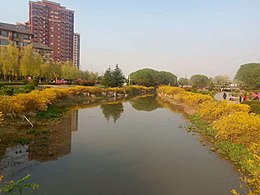

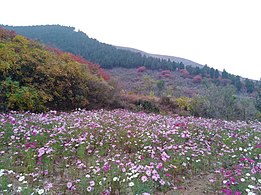
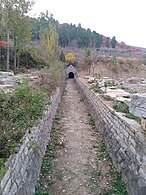

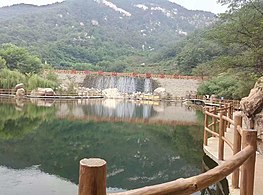
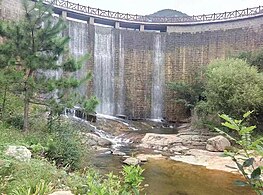
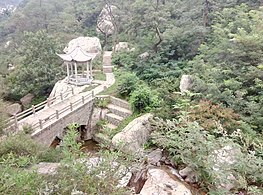


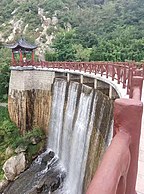





Recent Comments